Robert Nickelsberg’s Afghanistan: A History
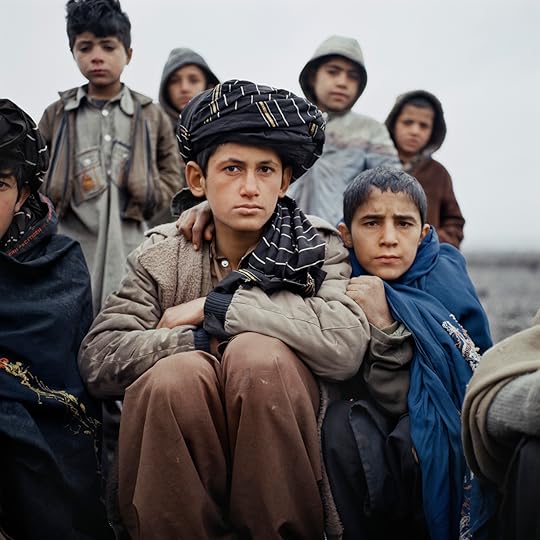 May 1990. Young Afghans huddle outside a refugee camp for internally displaced families near Khost, by the Pakistan border.
May 1990. Young Afghans huddle outside a refugee camp for internally displaced families near Khost, by the Pakistan border.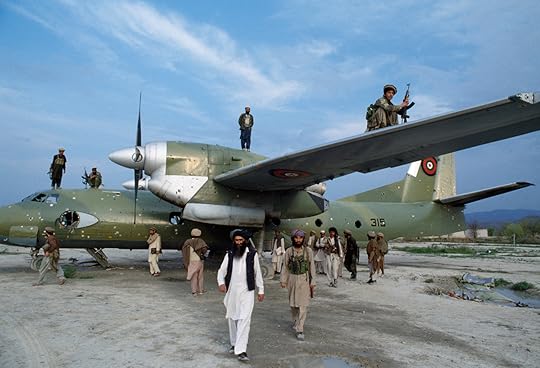 April 1991. Afghan mujahideen inspect a Kabul government plane after they seized Khost. Provincial control gave the Afghan mujahideen, Arabs enlisted by Al Qaeda, and Pakistani advisors valuable territory to establish base camps for training and resupply in Afghanistan.
April 1991. Afghan mujahideen inspect a Kabul government plane after they seized Khost. Provincial control gave the Afghan mujahideen, Arabs enlisted by Al Qaeda, and Pakistani advisors valuable territory to establish base camps for training and resupply in Afghanistan.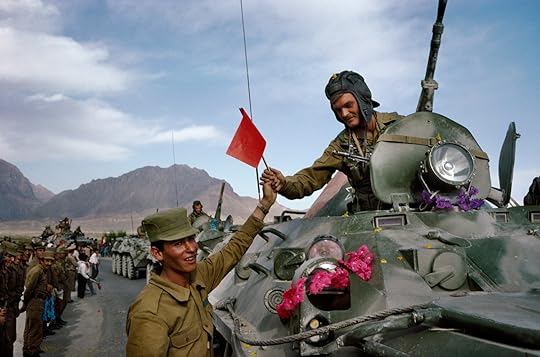 May 1988. An Afghan soldier hands a flag in solidarity to a departing Soviet soldier in Kabul on the first day of the army’s withdrawal from Afghanistan.
May 1988. An Afghan soldier hands a flag in solidarity to a departing Soviet soldier in Kabul on the first day of the army’s withdrawal from Afghanistan.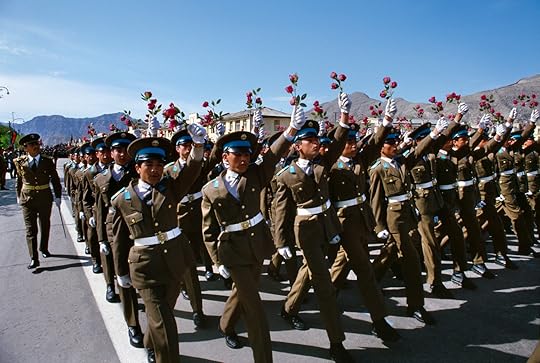 April 1989. Military cadets march in Kabul to celebrate the Saur Revolution, the Afghan Communist Party’s seizure of power 11 years earlier.
April 1989. Military cadets march in Kabul to celebrate the Saur Revolution, the Afghan Communist Party’s seizure of power 11 years earlier.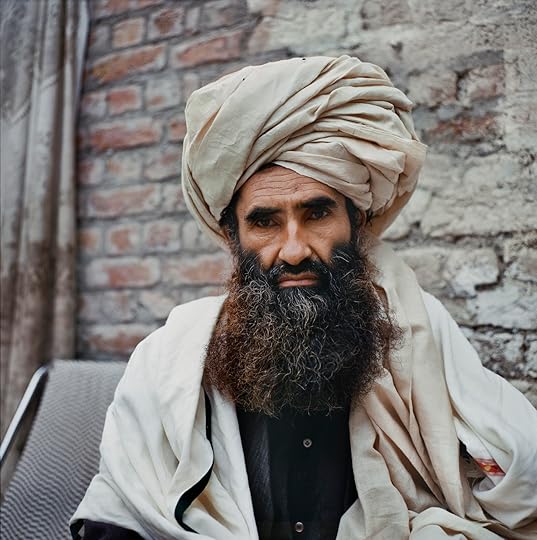 May 1990. Mujahideen commander Jalaluddin Haqqani at a base camp in Khost, near the Pakistan border. An ethnic Pashtun, Haqqani was an early convert to a global jihad and opened his Afghan training camps to all Muslims willing to train and fight for Islam. Haqqani befriended Osama bin Laden in the late 1980s and attracted Arab fighters and volunteers to his training camps along the Afghan-Pakistan border. Pakistan’s Inter-Services Intelligence, or ISI, favored the arrangement and later used the Haqqani camps to train Indian Kashmiri militants.
May 1990. Mujahideen commander Jalaluddin Haqqani at a base camp in Khost, near the Pakistan border. An ethnic Pashtun, Haqqani was an early convert to a global jihad and opened his Afghan training camps to all Muslims willing to train and fight for Islam. Haqqani befriended Osama bin Laden in the late 1980s and attracted Arab fighters and volunteers to his training camps along the Afghan-Pakistan border. Pakistan’s Inter-Services Intelligence, or ISI, favored the arrangement and later used the Haqqani camps to train Indian Kashmiri militants.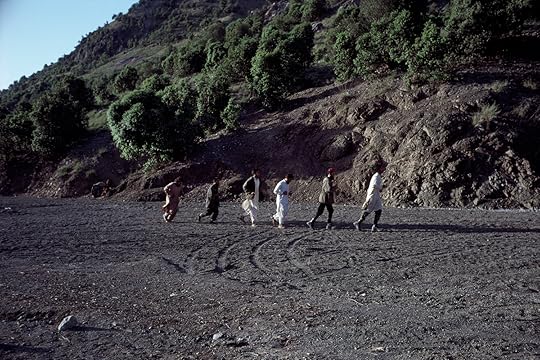 May 1990. Arab Al Qaeda members and Afghan mujahideen jog at a Zhawar training camp.
May 1990. Arab Al Qaeda members and Afghan mujahideen jog at a Zhawar training camp.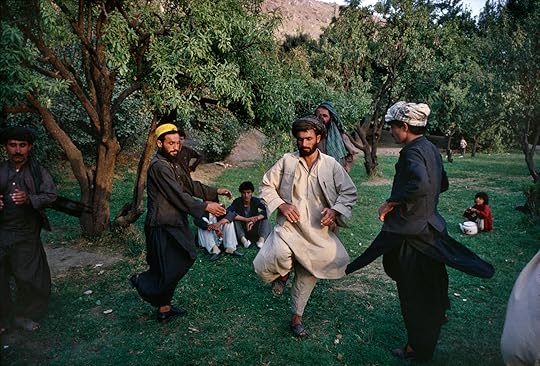 September 1991. Afghans in the Babur Gardens perform the attan, a traditional Afghan folk dance.
September 1991. Afghans in the Babur Gardens perform the attan, a traditional Afghan folk dance.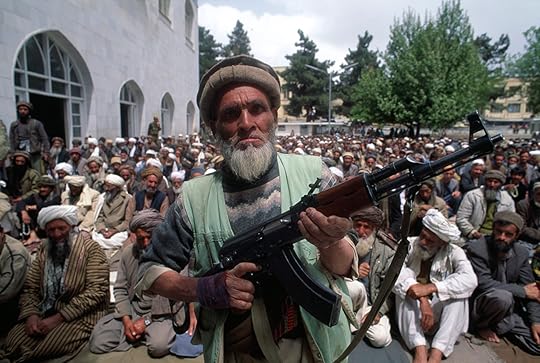 May 1992. A mujahideen fighter raises a Kalashnikov rifle at the Pul-e-Khishti mosque during the first Friday prayers following the mujahideen takeover of Kabul.
May 1992. A mujahideen fighter raises a Kalashnikov rifle at the Pul-e-Khishti mosque during the first Friday prayers following the mujahideen takeover of Kabul.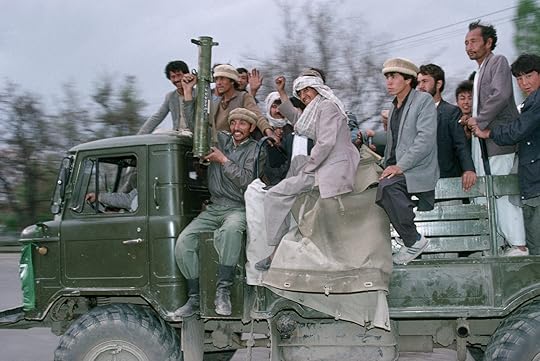 April 1992. Afghan mujahideen celebrate the capture of Kabul.
April 1992. Afghan mujahideen celebrate the capture of Kabul.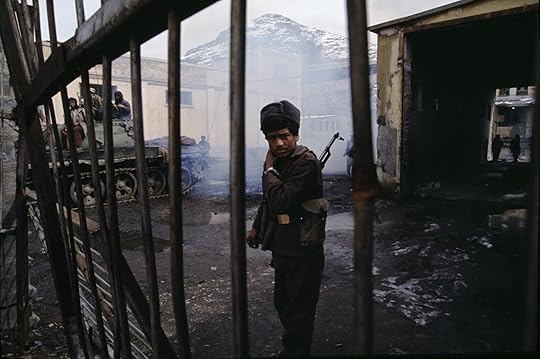 March 1993. A government tank maneuvers during fighting against Hezb-i-Wahdat forces in western Kabul.
March 1993. A government tank maneuvers during fighting against Hezb-i-Wahdat forces in western Kabul. 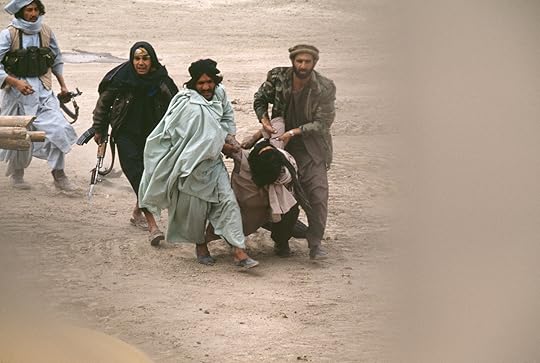 March 1994. A mortally wounded fighter is carried away after an argument over a looted television set between two groups charged with defending the capital.
March 1994. A mortally wounded fighter is carried away after an argument over a looted television set between two groups charged with defending the capital.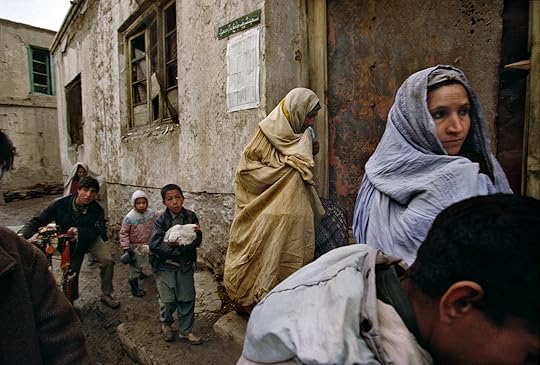 March 1993. A Kabul family flees its home during factional fighting between President Rabbani’s government forces and opposition Hezb-i-Islami and Hez-i-Wahdat fighters in western Kabul. The fighting marked a continuation of an operation in which hundreds of unarmed Hazaras were killed. The dispute for control of western Kabul involved Sunni militias against the Shia Hezb-i-Wahdat.
March 1993. A Kabul family flees its home during factional fighting between President Rabbani’s government forces and opposition Hezb-i-Islami and Hez-i-Wahdat fighters in western Kabul. The fighting marked a continuation of an operation in which hundreds of unarmed Hazaras were killed. The dispute for control of western Kabul involved Sunni militias against the Shia Hezb-i-Wahdat.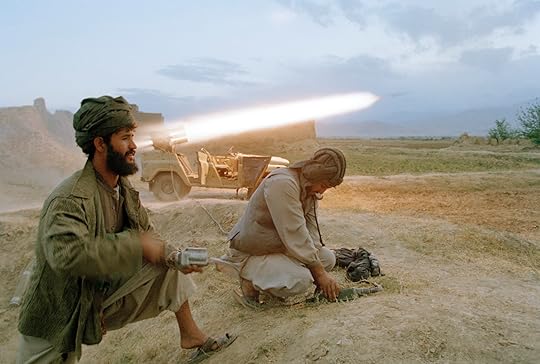 September 1996. Taliban soldiers fire a rocket at retreating forces of the Northern Alliance army north of Kabul. The capital fell to the Taliban on September 27, 1996. The Kabul government’s defenses collapsed with little resistance to the Taliban advance.
September 1996. Taliban soldiers fire a rocket at retreating forces of the Northern Alliance army north of Kabul. The capital fell to the Taliban on September 27, 1996. The Kabul government’s defenses collapsed with little resistance to the Taliban advance.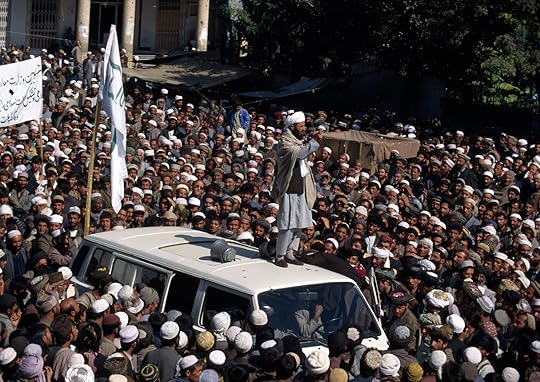 October 1996. Afghan men pray at the main Kabul mosque following the Taliban takeover.
October 1996. Afghan men pray at the main Kabul mosque following the Taliban takeover.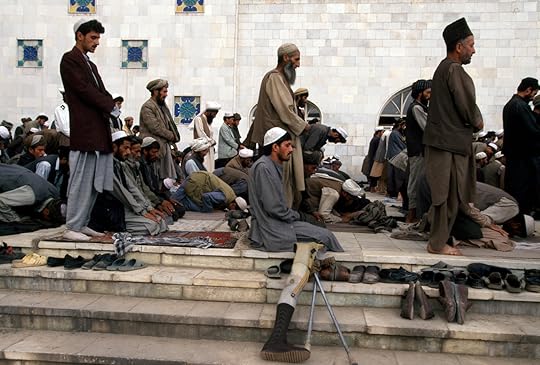 October 1996. Afghan men pray at the main Kabul mosque following the Taliban takeover.
October 1996. Afghan men pray at the main Kabul mosque following the Taliban takeover.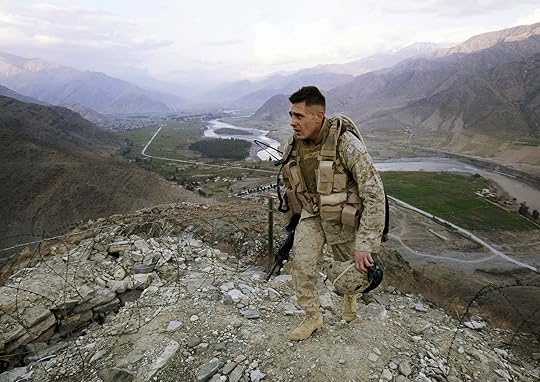 January 2004. A U.S. Marine patrols in Assadabad, Kunar province, 10 kilometers from the Pakistan border. During the Soviet occupation, Kunar had many Arab fighters living in the surrounding Hindu Kush mountains.
January 2004. A U.S. Marine patrols in Assadabad, Kunar province, 10 kilometers from the Pakistan border. During the Soviet occupation, Kunar had many Arab fighters living in the surrounding Hindu Kush mountains.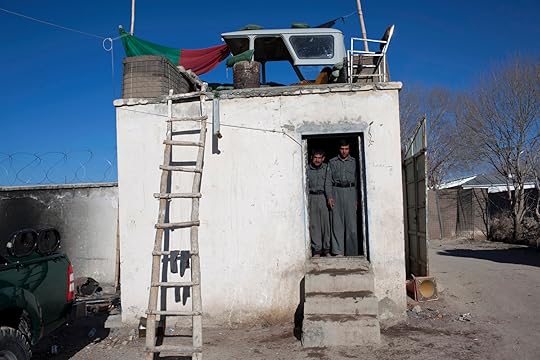 March 2009. Afghan National Police stand at a guard post in Qarabagh, Ghazni province. More than 40 of the 464 villages in Qarabagh district were controlled by the Taliban.
March 2009. Afghan National Police stand at a guard post in Qarabagh, Ghazni province. More than 40 of the 464 villages in Qarabagh district were controlled by the Taliban.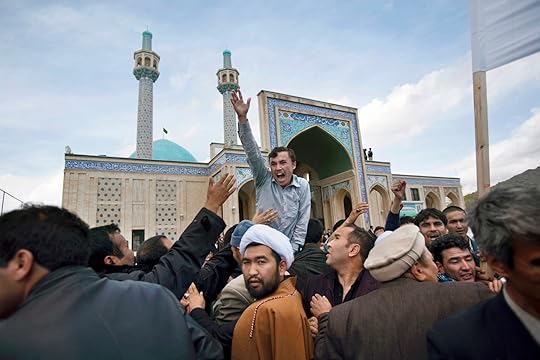 April 2009. A group of Shia men supporting a new family law confront opponents in Kabul. The law applies to the Shia community, which makes up 20 percent of Afghanistan’s Muslim population. Among the law’s provisions is one declaring “a wife shall fulfill the sexual desires of her husband.”
April 2009. A group of Shia men supporting a new family law confront opponents in Kabul. The law applies to the Shia community, which makes up 20 percent of Afghanistan’s Muslim population. Among the law’s provisions is one declaring “a wife shall fulfill the sexual desires of her husband.”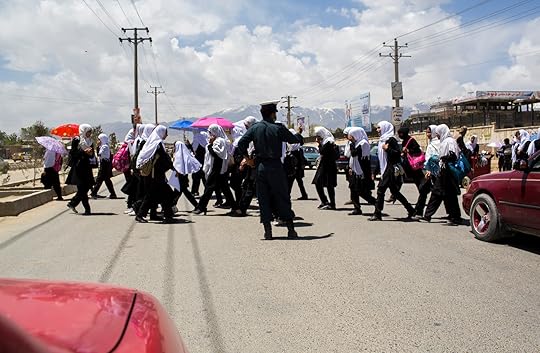 May 2013. A policeman stops traffic as schoolgirls cross a main roadway in western Kabul.
May 2013. A policeman stops traffic as schoolgirls cross a main roadway in western Kabul. 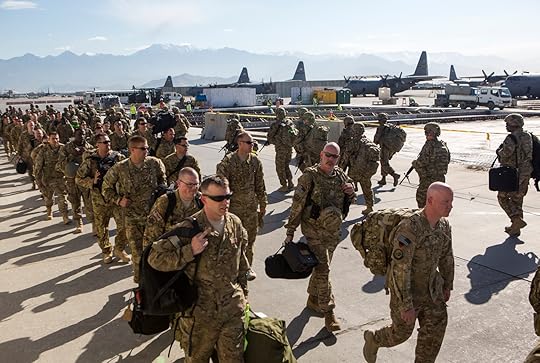 May 2013. A contingent of American troops conclude their tour in Afghanistan and prepare to fly home from Bagram Air Base. Others arrive, wearing their helmets. With the Western military presence winding down in the months before the December 2014 withdrawal deadline, the United States continues to provide the largest contribution of men and assistance.
May 2013. A contingent of American troops conclude their tour in Afghanistan and prepare to fly home from Bagram Air Base. Others arrive, wearing their helmets. With the Western military presence winding down in the months before the December 2014 withdrawal deadline, the United States continues to provide the largest contribution of men and assistance.
As American combat troops prepare to leave Afghanistan after more than a decade of fighting, it’s easy to forget that by the time the last combat soldier departs, at the end of next year, Afghanistan will have been at war for thirty-five years. It was Christmas Eve, 1979, when the first of eighty thousand troops from the Soviet Union swept across the border, ostensibly on a brief mission to stabilize a restive neighbor. Since then, war has never died out: the Soviets retreated, in 1989, ushering in an epoch of civil war that helped to bring the Taliban to power, in 1996. And then, in 2001, came the Americans. Entire generations of Afghans—not to mention journalists, diplomats, and aid workers—have come and gone.
Not Robert Nickelsberg. Nickelsberg, a photographer, came to Afghanistan for the first time in January, 1988, on assignment for Time, to cover the Soviet occupation, and has returned regularly ever since. Nickelsberg has documented each period with searching eyes and a fearless comportment, capturing the novel and the surreal in a war that never ends. This week, Prestel is publishing “Afghanistan: A Distant War,” a stunning collection of Nickelsberg’s photography. It’s a moving and indispensable book that captures the whole sweep of the country’s tumultuous modern history.
Under Nickelsberg’s gaze, Afghanistan changes and it stays the same. May, 1988: a Soviet soldier sits atop his armored car, shaking the hand of an Afghan soldier as the Soviet withdrawal begins. May, 1990: Jalaluddin Haqqani—an anti-Soviet guerrilla leader, a friend of the C.I.A. and Osama bin Laden—glowers at Nickelsberg’s camera. (Haqqani lives; his family still battles the Americans from its sanctuary in Pakistan.) October, 1996: a Taliban mullah speaks to a crowd in downtown Kabul, not a woman in sight. May, 2013: a policeman in Kabul stops traffic as a group of schoolgirls cross the street. The crags and escarpments of the Afghan landscape loom on the periphery of Nickelsberg’s images, as do the faces of Afghans, of every hue and shape, living testaments to the centuries of migrations that have swept over the country.
A Nickelsberg photo taken last May has stayed with me. It shows two lines of American soldiers on a landing strip at Bagram airbase, outside Kabul. One group, looking tried and sober, is heading for a plane, going home after their months-long tour; the other, a few feet away, is getting off the plane to replace them. This picture captures not just the length of America’s Afghan war but also its brevity. The Americans came, and now, after nearly a decade and a half, they are finally nearly gone.
Above is a selection of photographs from “Afghanistan: A Distant War,” with captions from the book.
Photographs by Robert Nickelsberg/Getty.
...read moreThe New Yorker's Blog
- The New Yorker's profile
- 206 followers



